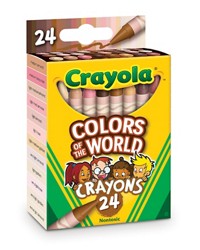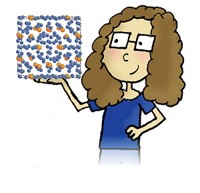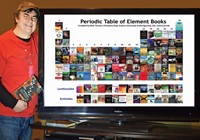Advertisement
Grab your lab coat. Let's get started
Welcome!
Welcome!
Create an account below to get 6 C&EN articles per month, receive newsletters and more - all free.
It seems this is your first time logging in online. Please enter the following information to continue.
As an ACS member you automatically get access to this site. All we need is few more details to create your reading experience.
Not you? Sign in with a different account.
Not you? Sign in with a different account.
ERROR 1
ERROR 1
ERROR 2
ERROR 2
ERROR 2
ERROR 2
ERROR 2
Password and Confirm password must match.
If you have an ACS member number, please enter it here so we can link this account to your membership. (optional)
ERROR 2
ACS values your privacy. By submitting your information, you are gaining access to C&EN and subscribing to our weekly newsletter. We use the information you provide to make your reading experience better, and we will never sell your data to third party members.
People
James T. Grady-James H. Stack Award For Interpreting Chemistry For The Public
Sponsored by ACS
by Rick Mullin
January 10, 2011
| A version of this story appeared in
Volume 89, Issue 2
As far as the world of chemistry is concerned, Theodore W. (Theo) Gray isn’t interested in preaching to the choir. Nor is he necessarily interested in recruiting for the choir. He seems, however, unable to control an innate urge to communicate his enthusiasm for the world of science—in particular the world of chemistry.
Perhaps best known for his monthly column, “Gray Matter,” in Popular Science magazine, Gray first came to light as a science communicator with his version of the periodic table—an actual table he constructed to serve as both furniture and learning guide.
He went on to produce a poster of his periodic table and the book “The Elements: A Visual Exploration of Every Known Atom in the Universe.” The latter morphed into an application for the iPad that allows the user to manipulate the objects depicted in color photographs in his book and on his poster—his table features actual objects composed of many of the elements.
His need to get his hands on the elements and convey the experience in a literal medium got the attention of editors at Popular Science in 2002. Those editors, Gray says, instilled in him the discipline necessary to get his love of science across to the magazine’s readers. “They forced me to write about something in a way that communicates relevance to the daily life of readers as opposed to just writing about how it’s really cool,” he says.
Gray’s job as a science communicator, however, is an entrepreneurial sideline. After graduating with a bachelor’s degree in chemistry, he cut off his graduate studies in molecular dynamics at the University of California, Berkeley, in the 1980s to cofound Wolfram Research, the developer of the mathematical software tool Mathematica. “This was more suited to my interests,” he says. “Being an academic chemist would have made me miserable. That seemed to be all about grant writing. You don’t get to blow stuff up.”
Blowing stuff up—a metaphor, Gray says, for doing something powerful in the world—has marked the launch of any number of careers in chemistry. Oliver Sacks in his book “Uncle Tungsten” touches on the topic. Gray cites that book as his inspiration for the periodic table project. And Sacks has acknowledged Gray’s contribution. “Gray combines a first-class theoretical brain with a love of hands-on experiments and improvisation,” Sacks says. “And like Humphry Davy and Michael Faraday, he is something of a showman.”
His latest venture, a company called Touch Press, aims to apply his approach to “The Elements” iPad application to electronic books, though not necessarily science books. Gray hopes to keep his job at <em>Popular Science, </em> however. The column is fun to write, he says, and he likes the idea of throwing out bread crumbs to readers who may not otherwise be exposed to interesting topics in science. “One of the things I really try to communicate in the column,” he says, “is that there is a lot more here.”
Gray, who is 46, will present the award address at an invitation-only event being planned by the ACS Office of Communications.






Join the conversation
Contact the reporter
Submit a Letter to the Editor for publication
Engage with us on Twitter